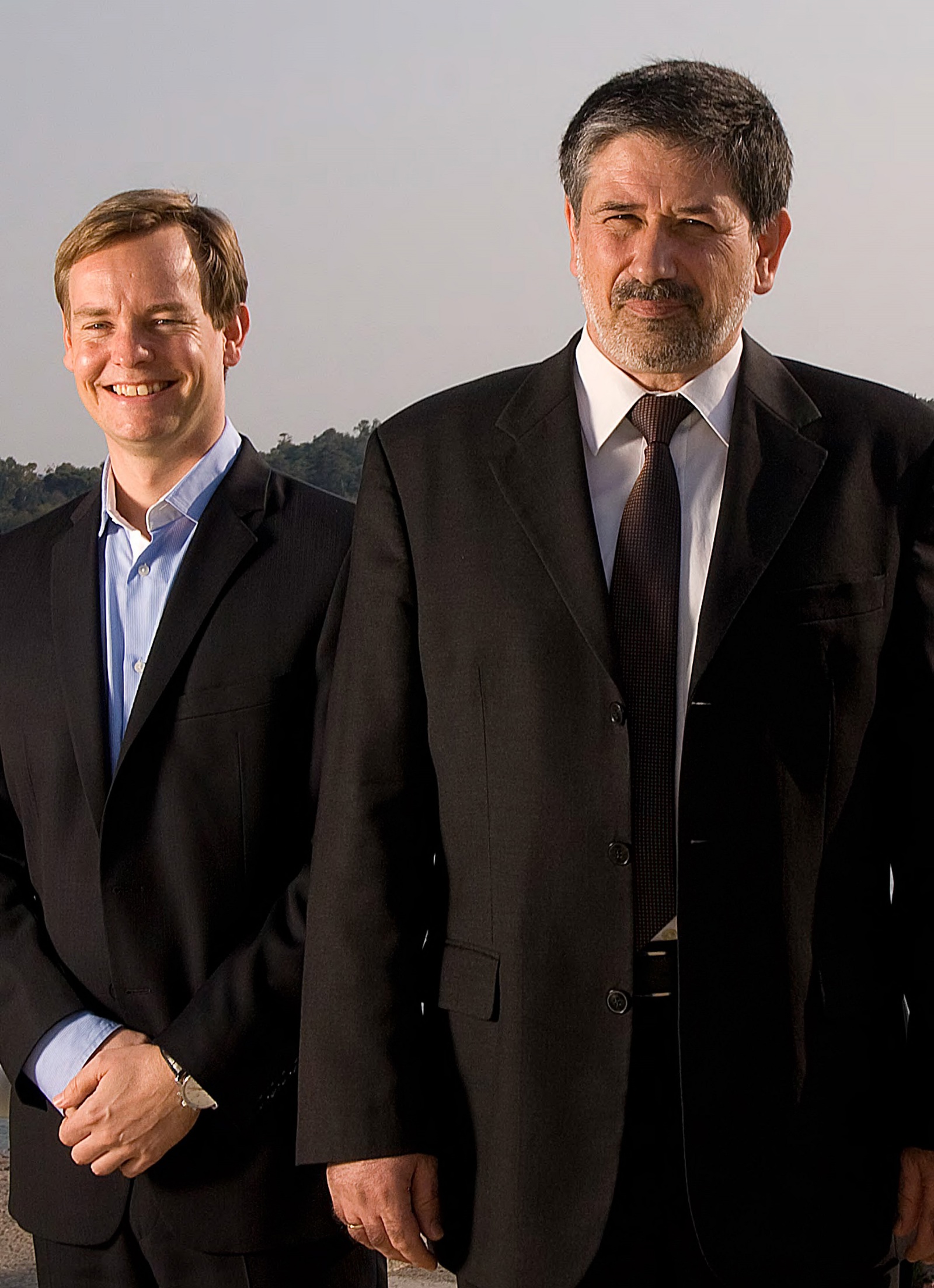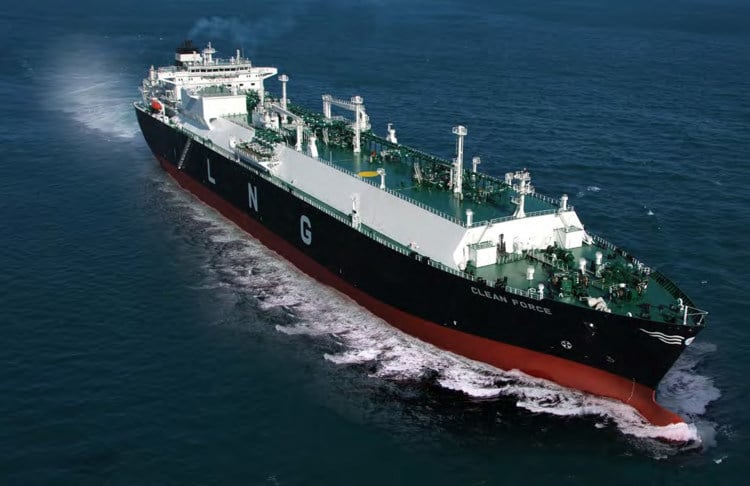
The long and the short of it
Dynagas builds success on experience gained from wide vessel trading, a high quality and flexible fleet and a fully integrated organisation. Dynagas Ltd is a fully integrated LNG Shipping company that built its LNG business on the short-term charter market. Now, with a proven track record and a solid customer base, it is expanding its LNG carrier fleet in a strong market.
-
Text:Kongsberg Maritime Communication
-
Gunvor Hatling MidtbøVice President, Communications
After closely watching the LNG segment for several years, Dynagas ordered its first three LNG carriers from Hyundai Heavy Industries (HHI) in 2004. The Kyoto protocol was about to come into force and regulatory trends as well as a shift in consumer preferences all pointed to a future based on cleaner burning fuels. Dynagas Commecial Director, Tony Lauritzen, says that based on an anticipated demand for LNG transportation, Dynagas wanted to become a high quality and reliable first-class LNG shipping company offering flexible shipping transportation solutions to first class clients.
“We built our carriers with the experienced HHI and selected the most robust and reliable equipment makers. Ensuring that we selected a design that was optimised for terminal compatibility was critical. At 150,000 cubic metres (cbm), the vessels were built to accommodate the average cargo size and guaranteed wide terminal acceptance. We also opted for full in-house operations and pursued short-term charter employment with as many first class charterers as possible. This meant the company would be exposed to different trades and market participants in order to gain industry experience,” he points out.
A FLEXIBLE ALTERNATIVE
The LNG sector was built on the idea of long-term contracts. This allowed Dynagas to offer a clear alternative
to charterers looking for more flexible shipping solutions which Lauritzen says, “enabled their cargoes to reach the highest paying markets and realise the true value of the commodity.” While a long-term time charter approach may have been an easier way to enter the industry, Lauritzen says there were other reasons for Dynagas to go down the short-term route.
“There aren’t many LNG ship owners that can match our ratio of terminals visited divided by years and vessels”
“Many operators sign long-term charters with a fixed load and discharge terminal. We realised that we needed to take a different approach to quickly progress in the sector. Despite being offered long-term charters, we chose to do business with several charterers with a wide trading pattern, calling at different terminals. This helped us gain trading and terminal experience and build up an operation that exceeded the requirements of various industry participants. It hasn’t been easy, but it has resulted in the company building up a robust knowledge base,” he explains.
As they had suspected, Dynagas faced a steep learning curve in a notoriously tough industry or newcomers. But by constantly challenging itself to meet requirements for a variety of operations and terminals, the company quickly developed both its onshore and offshore capability. Lauritzen states hat Dynagas is now one of the few carriers in the market with widespread industry experience.
Newbuilding Director, Manos Migadis, elaborates: “We don’t have comparable statistics to back this up, but I’m confident that there aren’t many LNG shipowners that can match our ratio of terminals visited divided by years and vessels,” he asserts.
By employing this strategy, Dynagas was also able to develop relationships with a range of charterers and build a reputation as a trusted LNG carrier.
“The terminals our fleet has called to have given us excellent feedback which we take pride in. The vetting inspections by the majors of the vessels have also come out with high-ranking results. However, this is a dynamic industry with constant changes in requirements and we continuously monitor developments and adapt accordingly in order to stay ahead of the curve,” Lauritzen states.

KEEPING IT ALL IN-HOUSE
An important part of Dynagas’ strategy has been its commitment to run all aspects of its operation internally including newbuilding negotiations, plan approval, site supervision, HSSE, technical management, crew management, technology & IT and administration. Companies looking to fast-track entry into a market or reduce liability often opt to outsource. While outsourcing is usually cheaper, Lauritzen says, “Having the cheapest operations has never been our goal. Our goal is to ensure safety and performance and thereby avoid downtime.”
He adds that, “Problem solving and ensuring good communication between departments is much more efficient when you manage things internally rather than outsourcing.
Dynagas will add seven newbuildings to its fleet. While Lauritzen admits that maintaining quality through rapid expansion is one of the biggest challenges any company can face, he believes the inhouse strategy will ensure that the company will meet this challenge successfully.
“Our operation will become more complex as we add the newbuildings, but with no downtime in five years on any vessel I believe we have the right approach. Our preparations have included hiring experienced additional seafarers and office personnel, training staff for new technology on the existing ships and shore training,” he explains.
VESSEL FLEXIBILITY IS KEY
Now with a recognised track record and brand and an expanding, diversified fleet, Dynagas is aiming to build a balanced charter portfolio with short, medium and long-term charters.
All of Dynagas’ vessels have been built to serve multiple charterers, which makes flexibility key. The ships are built to handle a variety of conditions and optimised for terminal compatibility. Of the seven newbuildings, three represent an evolution of the current fleet of 150,00-cbm. By using similar principal hull dimensions and replacing the steam engines with tri-fuel diesel electric propulsion systems, the newbuilds gained an additional five thousand cubic metres of carrying capacity taking them to 155,000-cbm while retaining the same terminal compatibility.
At 162,000-cbm, and with the latest low boil off technology, Migadis says the remaining four newbuildings are designed for long-haul transportation. “This size is large enough to make long voyages economical, while retaining good terminal flexibility. For vessels larger than 162,000-cbm, terminal compatibility is reduced and fewer charterers have access to fill up such cargo sizes,” he explains.
All newbuildings will be powered by fully redundant tri-fuel diesel electric propulsion systems, and have reinforced membrane cargo containment systems. They will also be assigned with green passports and fitted with a ballast water treatment system.
The entire Dynagas fleet is fitted with Kongsberg equipment. When building the first vessel in 2004, one of Dynagas’ conditions to Hyundai was to use a Kongsberg integrated automation system. Migadis says a reliable automation system is essential on LNG vessels.
“In LNG, you don’t come into contact with the cargo at all so you need a very accurate system. The selected systems proved effective and reliable. The Kongsberg after sales and support is good and we also have a very close relationship with the people. It is also encouraging that Kongsberg has opened a new office in Greece, which will give us better access to their training facilities and should improve the level of follow up they provide. It also helps that we can meet them and that they are in the same time zone.” he says.
Dynagas has now extended its scope with Kongsberg Maritime by installing the custody transfer system, K-Gauge CTS.
BIG AMBITIONS
Lauritzen says the company is excited about and well prepared for the addition of seven newbuilds, but confides that the company’s long-term ambitions go beyond ships.
“Our long-term goal, is to be a comprehensive, reliable and fully integrated LNG company, owning other LNG infrastructure assets in addition to LNG ships,” he remarks.